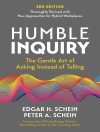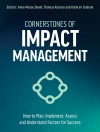This book offers a multidisciplinary analysis of approach in the field of energy studies of Japan, examining post-closure coal mining towns in Japan and their gentrification. It considers the impact of closures on the agricultural industry, the re-absorption of laid off coal miners into service and industrial sectors, and the gentrification of former coal mines into agricultural farms and communities. It also considers the historical process of gentrification in terms of origins, social history, continuity/discontinuity and cooperation/resistance. The historical background of coal mine closures analyses nostalgic recollection about mine closures and Sakubei’s UNESCO drawings of life in the coal mines and other cultural materials related to coal energy and the mining industry in general in Japan.
Inhaltsverzeichnis
1. Introduction- Post-Mining Communities: A multidisciplinary analysis of post-closure coal mining towns in Japan and their gentrification history.- 2. Comparison of the impacts of Japan’s industrialization on the coal mining and agriculture and forestry industries.- 3. The Miike Coal Mine and Omuta City: A case study of the largest and last mine’s closure in Japan.- 4. Historical development and gentrification of Hokkaido’s former coal-mining areas: Case studies of Bibai, Kushiro, Mikasa and Yubari.- 5. The Coal Industry in the Northeast Asian Context.- 6. Coal Mining Subcultures: a brief cultural history of Hokkaido and comparative perspectives with other regions.- 7. The World of the Female Miner in Japan: Sites of Compliance and Resistance.- 8. Conclusion.
Über den Autor
Tai Wei Lim is a Senior Lecturer at Singapore University of Social Sciences and Senior Research Fellow adjunct at East Asian Institute, National University of Singapore.
Naoko Shimazaki is Professor at Department of Sociology in Waseda University.
Yoshihisa Godo is Professor of Economics at Meiji Gakuin University, Tokyo.
Yiru Lim is a Lecturer at Singapore University of Social Sciences, College of University Core.












